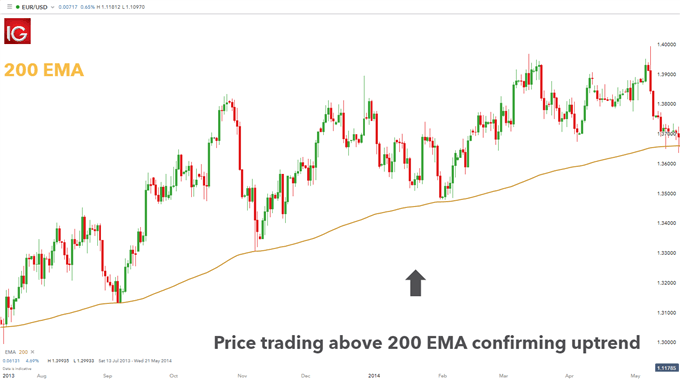

- 50 200 EMA STRATEGY PDF
- 50 200 EMA STRATEGY FULL
- 50 200 EMA STRATEGY SERIES
- 50 200 EMA STRATEGY DOWNLOAD
The primary function of moving averages is to help smooth the price data so that we can better gauge the overall price action of a trading instrument.
50 200 EMA STRATEGY DOWNLOAD
Click Here To Download Understanding Moving Averages
50 200 EMA STRATEGY PDF
When the simple moving median above is central, the smoothing is identical to the median filter which has applications in, for example, image signal processing.Download the short printable PDF version summarizing the key points of this lesson…. For a given variance, the Laplace distribution places higher probability on rare events than does the normal, which explains why the moving median tolerates shocks better than the moving mean. It can be shown that if the fluctuations are instead assumed to be Laplace distributed, then the moving median is statistically optimal. However, the normal distribution does not place high probability on very large deviations from the trend which explains why such deviations will have a disproportionately large effect on the trend estimate.
50 200 EMA STRATEGY SERIES
Statistically, the moving average is optimal for recovering the underlying trend of the time series when the fluctuations about the trend are normally distributed. For larger values of n, the median can be efficiently computed by updating an indexable skiplist.

Where the median is found by, for example, sorting the values inside the brackets and finding the value in the middle. Let those data-points be p 1, p 2, …, p n An example of a simple equally weighted running mean is the mean over the last k k entries of a data-set containing n n entries. This ensures that variations in the mean are aligned with the variations in the data rather than being shifted in time. However, in science and engineering, the mean is normally taken from an equal number of data on either side of a central value.

In financial applications a simple moving average ( SMA) is the unweighted mean of the previous k k data-points. Viewed simplistically it can be regarded as smoothing the data. When used with non-time series data, a moving average filters higher frequency components without any specific connection to time, although typically some kind of ordering is implied. Mathematically, a moving average is a type of convolution and so it can be viewed as an example of a low-pass filter used in signal processing. It is also used in economics to examine gross domestic product, employment or other macroeconomic time series. The threshold between short-term and long-term depends on the application, and the parameters of the moving average will be set accordingly. Then the subset is modified by "shifting forward" that is, excluding the first number of the series and including the next value in the subset.Ī moving average is commonly used with time series data to smooth out short-term fluctuations and highlight longer-term trends or cycles. Given a series of numbers and a fixed subset size, the first element of the moving average is obtained by taking the average of the initial fixed subset of the number series. Variations include: simple, cumulative, or weighted forms (described below).Ī moving average filter is sometimes called a boxcar filter, especially when followed by decimation. It is also called a moving mean ( MM) or rolling mean and is a type of finite impulse response filter.
50 200 EMA STRATEGY FULL
In statistics, a moving average ( rolling average or running average) is a calculation to analyze data points by creating a series of averages of different selections of the full data set. Smoothing of a noisy sine (blue curve) with a moving average (red curve). For other uses, see Moving-average model and Moving average (disambiguation).


 0 kommentar(er)
0 kommentar(er)
